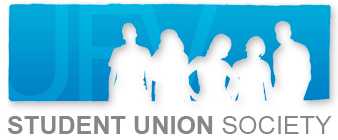By Melissa Spady (The Cascade) – Email
Print Edition: July 3, 2013
A surprising response to SUS subcommittees suggests that students are ready to shake their apathetic reputation.
SUS president Shane Potter recently opened up the subcommittees to external, non-board member students by sending out an application for interested parties to fill out. SUS subcommittees aresmall groups of students who arededicated to discussing and finding solutions to different campus related issues.
As many students take the summer off, the return rate was expected to be low. However, Potter remained optimistic.
“Worst case scenario we get two people,” he says. “That’s two more people that can come and sit on our committees. There’s no downside.”
In a shocking but positive outcome, over 15 students sent in applications to get involved with the student union. Given a tradition of low involvement at this time of year, this reaction bodes well for the upcoming fall semester, with the potential to double that number.
Potter attributes the high number of return to opening up the committees to non-board members and assuring students that the time commitment is less than what they imagine. Students who avoid getting involved in student government often do so because they lack the extra time in their already busy schedules to run in an election or dedicate several hours a week for meetings.
However, Potter explains that committee meetings are a low-impact gateway into getting involved on campus.
“You have an hour of time? You have two? Great,” Potter assures. “I’ll give you a kick-ass reference which you can use for scholarships, grants, [or] a job. People are responding to that.”
The response doesn’t stop there; Potter says that non-board members turning out to meetings are also volunteering more of their time and showing up to events on campus.
Potter pointed out Thomas Davies as an example of this system working well; after joining an external budget committee earlier this year, Davies became a representative-at-large.
Not only does a more robust student turnout boost a turning in the apathy tide, but it also brings some much-needed diversity to the table. Having more students from a variety of programs, backgrounds and experience will help create more dynamic discussions on ways to improve the effectiveness of our student government.
“It’s great having someone who has student life ambassador or clubs and associations experience, but also those who have never been involved in anything,” Potter explains. “It’s about getting that diversity.”
It also means SUS can stop guessing how to appeal to new faces, and start asking them exactly what they want to see happen on campus.
Potter considers this a pilot project for later board reform as it reinforces the changes Potter feels need to be made in order to effectively represent the student body.
“We need a board that is a diverse representation of all the student leadership associations,” he says. “I’m blown away with the calibre [of students] that this campus is attracting and it really motivates me to push this student union in a direction where we use these high-calibre students, because we can accomplish a lot.”


